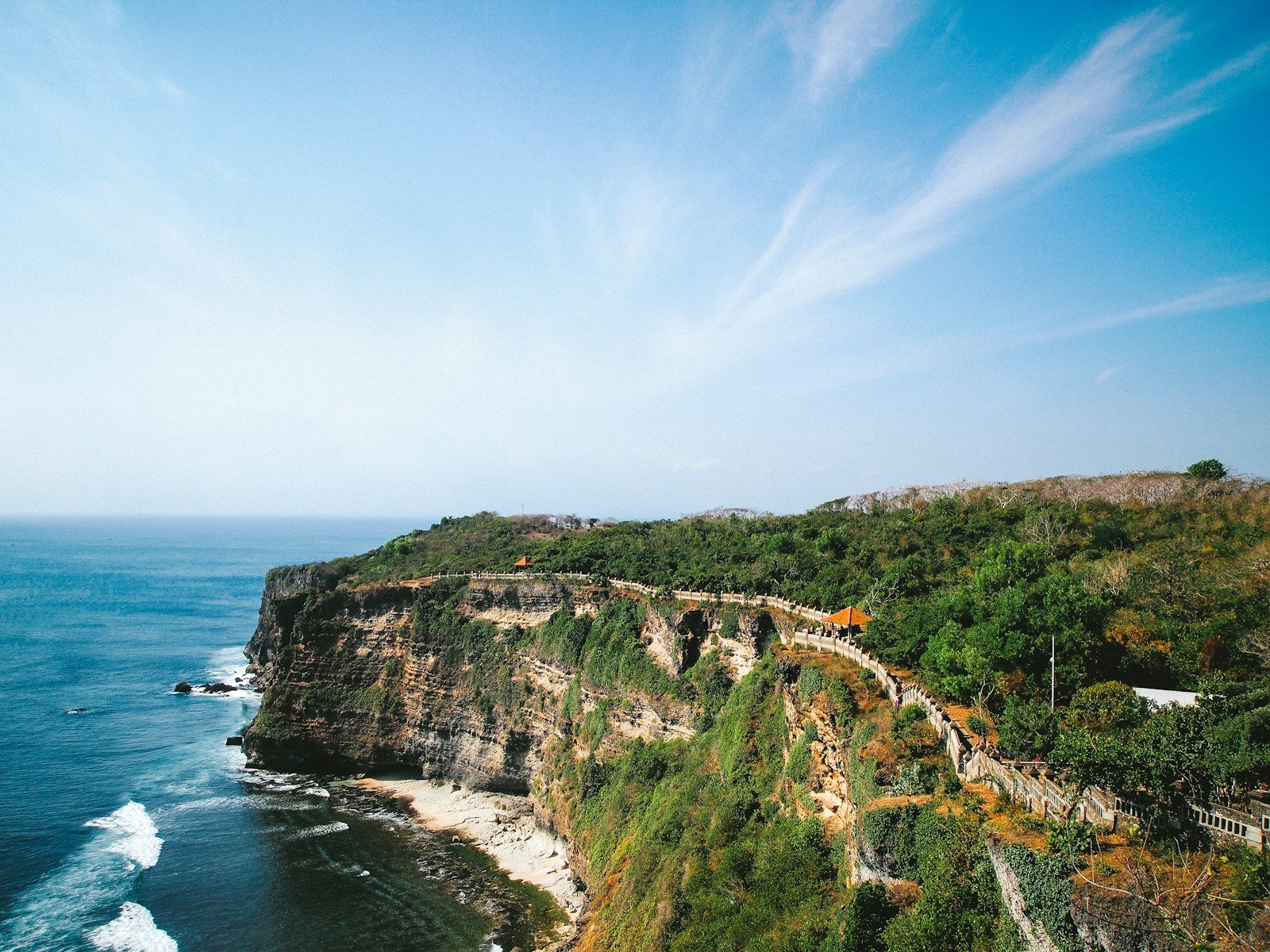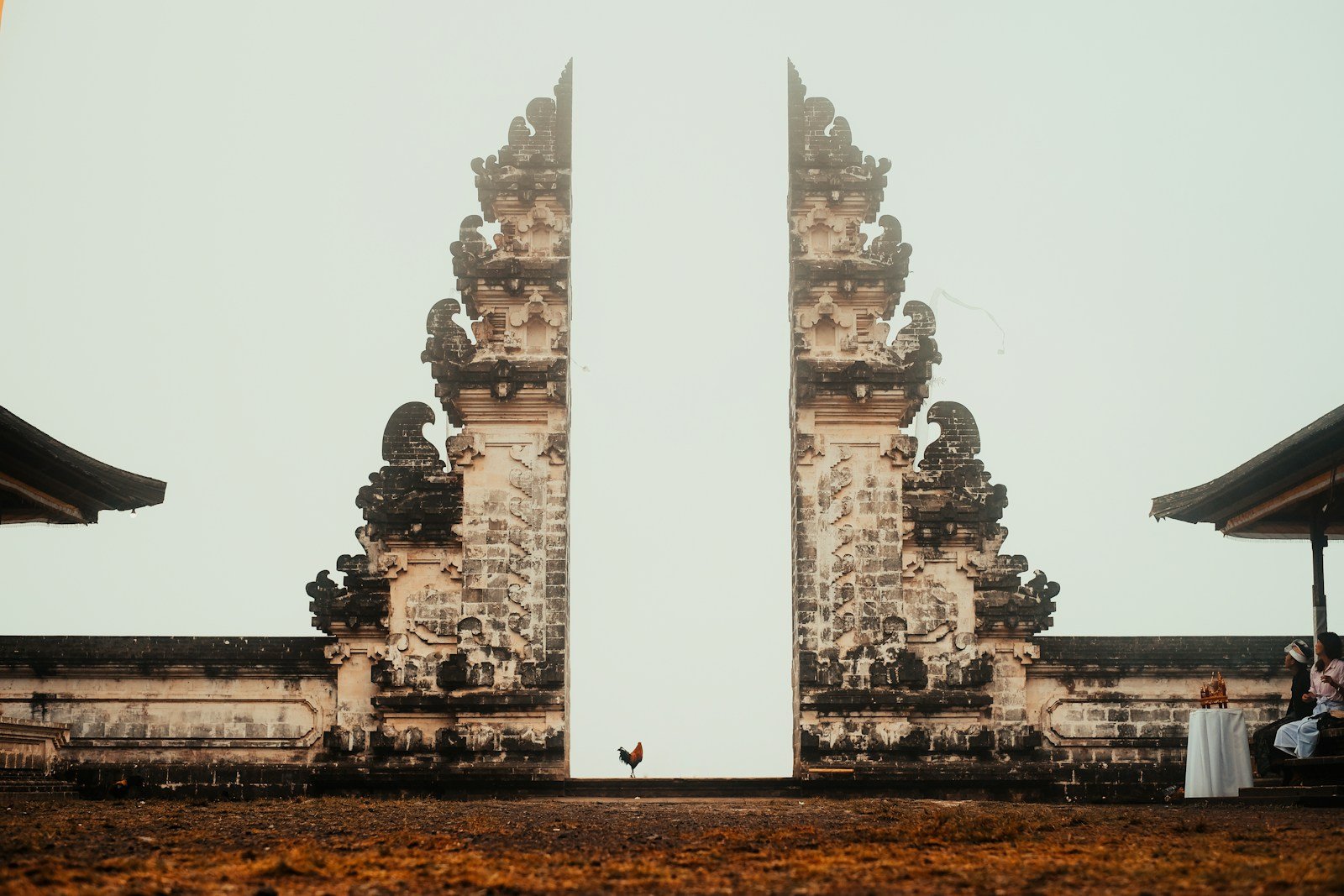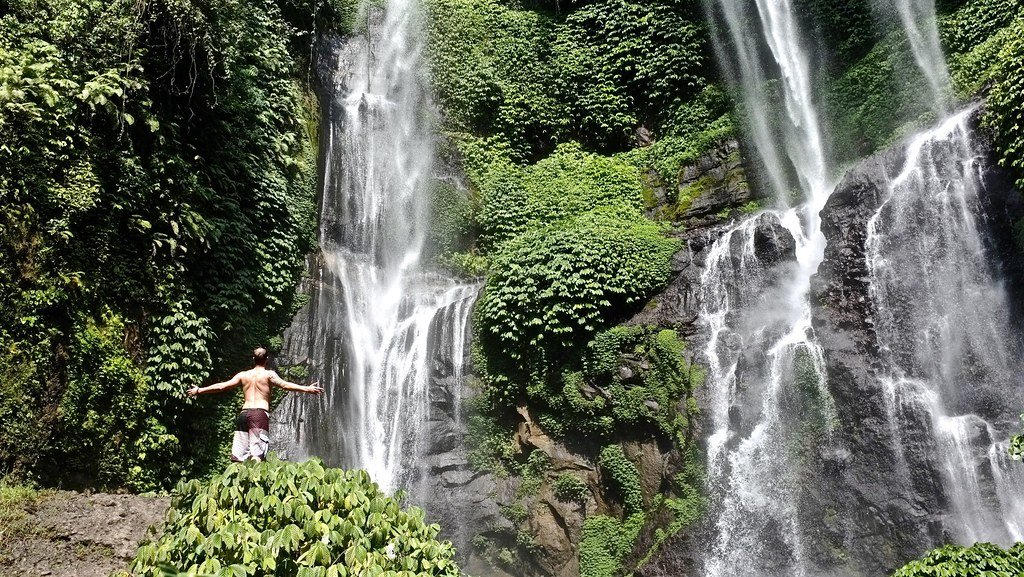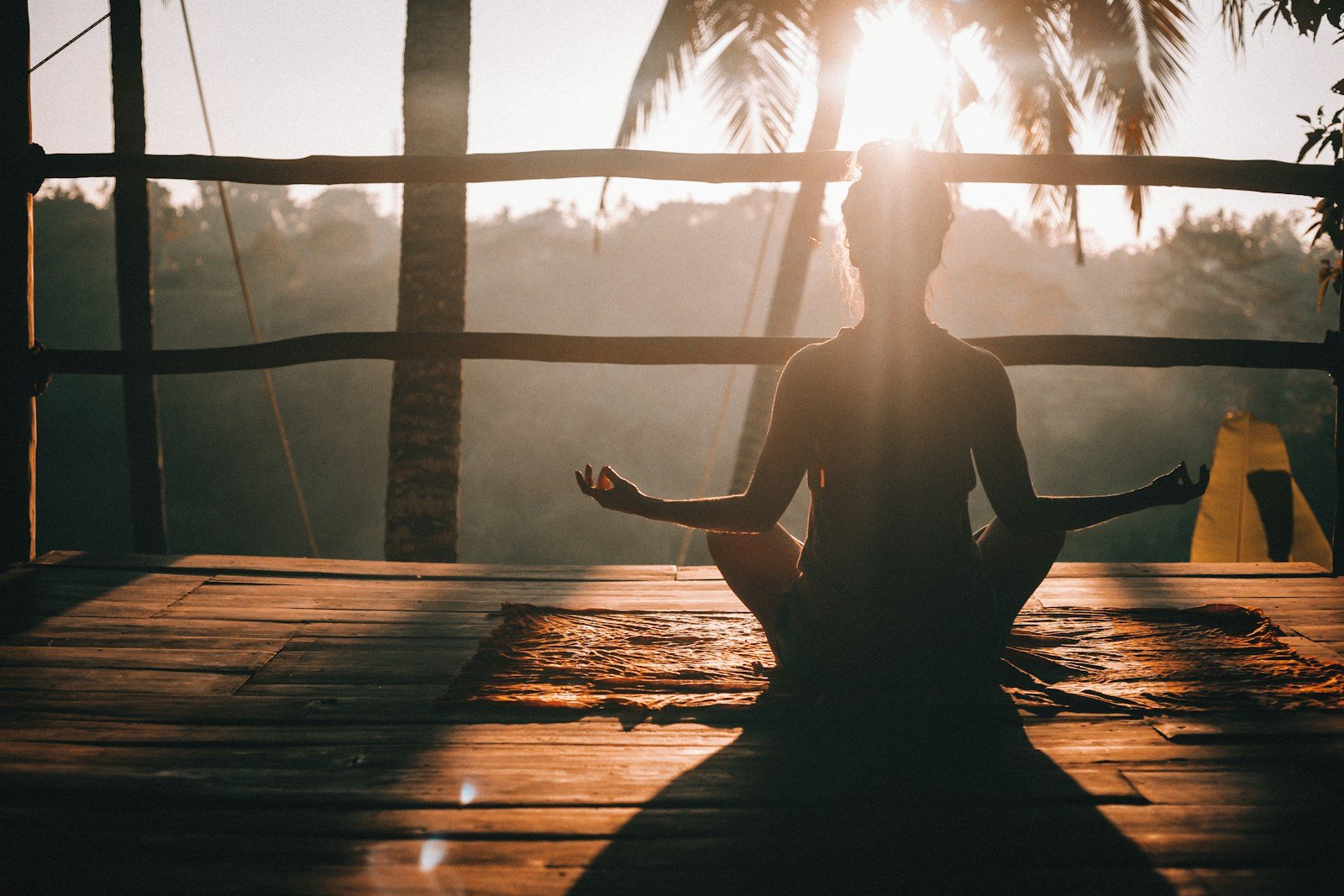Top Must-Visit Temples in Bali
If you’re wondering which temples are truly worth your time in Bali, you’ve hit the jackpot. The island boasts over 20,000 temples, but we’re drilling down to the absolute must-see spiritual landmarks that combine breathtaking architecture, cultural significance, and jaw-dropping scenery.
The Big Five: Essential Temple Experiences
1. Tanah Lot – Ocean Temple of Legends
Perched dramatically on a rock formation jutting into the Indian Ocean, Tanah Lot isn’t just a temple—it’s a photographic masterpiece. Constructed in the 16th century, this sea temple represents a crucial part of Balinese Hindu mythology. Arrive 90 minutes before sunset to secure the best viewing spot, as crowds can get intense during peak season (June-August).
💡 Pro Tip: Wear comfortable walking shoes and bring a light jacket. The ocean winds can get chilly, and you’ll want to explore the surrounding areas.
Visit during low tide to walk closer to the temple base, but respect sacred areas marked off-limits. Entry costs approximately $7-10 USD, with additional parking fees around $2.
2. Uluwatu – Clifftop Spiritual Spectacle
Situated on a 70-meter-high cliff overlooking the roaring Indian Ocean, Uluwatu Temple offers more than just stunning views. The real magic happens during the nightly Kecak fire dance performances, where 50-100 male performers create a hypnotic choral soundtrack against the sunset backdrop.
Entrance fees hover around $5-8 USD, with dance performances priced separately at $15-20 USD. Pro travelers recommend booking evening performances in advance, especially during peak tourist seasons.
3. Lempuyang – Instagram’s Gates of Heaven
Famous for its picture-perfect “Gates of Heaven” framing Mount Agung, Lempuyang isn’t just about social media bragging rights. Located in East Bali, this temple complex requires serious commitment—expect a steep climb and early morning start to capture that iconic shot.
Arrive before 9 AM to minimize waiting times. Photography “tricks” involve a reflection pool creating the illusion of mirrored gates. Entry is typically $5 USD, with optional photo assistance costing an additional $10-15 USD.
4. Ulun Danu Beratan – Mountain Lake Serenity


Nestled in Bedugul’s highlands, this water temple seems to float magically on Lake Beratan. Dedicated to water, lake, and river spirits, it offers breathtaking mountain backdrop views that’ll make your camera work overtime.
Best visited during early morning hours when mist settles around the temple, creating an ethereal atmosphere. Entry costs approximately $4-6 USD in 2025. Bring a light sweater—highland temperatures can drop to 65-70°F.
5. Besakih – The Mother Temple
Consider Besakih the spiritual heart of Bali. Spanning an enormous complex with 23 separate temples, it’s the largest and holiest Hindu site on the island. Situated on Mount Agung’s slopes, this temple survived multiple volcanic eruptions, adding to its mythical status.
Entry is around $10-15 USD, including mandatory guided tour. Visit during a non-festival period to explore more peacefully—major ceremonies can restrict tourist access.
Secondary Temples Worth Your Time
1. Tirta Empul – Sacred Water Purification
A holy spring water temple where locals and tourists participate in traditional purification rituals. Bring a change of clothes if you plan to join the water cleansing ceremony.
2. Gunung Kawi – Ancient Rock Shrines
These 11th-century rock-cut temples offer a glimpse into ancient Balinese architecture. Expect a moderate hiking experience with stunning rice terrace views.
3. Goa Gajah – Mysterious Elephant Cave
A fascinating archaeological site featuring intricate stone carvings and a compact but historically rich temple complex.
💡 Pro Tip: For all temple visits, respect dress codes: cover shoulders and knees, bring a sarong, and maintain a respectful demeanor.
Frequently Asked Questions About Bali Temples
Q: Which temples are worth visiting in Bali?
A: Bali offers numerous incredible temples that are must-visit destinations for travelers. The most recommended temples include Uluwatu Temple, Tanah Lot, Besakih Temple, Tirta Empul, and the famous Lempuyang Temple with its iconic Gates of Heaven. Each temple offers unique architectural beauty, spiritual significance, and breathtaking landscape views that showcase Balinese culture and religious traditions.
Q: What is the most photographed temple in Bali?
A: The Lempuyang Temple, specifically its Gates of Heaven (Pura Lempuyang Luhur), is arguably the most photographed temple in Bali. Located in East Bali, this temple features a stunning gateway perfectly framing Mount Agung in the background, creating an incredibly photogenic scene that has become viral on social media platforms worldwide. Visitors often wait in line to capture this iconic shot, making it a popular Instagram destination.
Q: Is the Lempuyang Temple worth visiting?
A: Absolutely! Lempuyang Temple offers a unique and memorable experience with its spectacular mountain views, spiritual atmosphere, and stunning architectural design. While the famous photo spot can involve long waiting times, the temple’s cultural significance and breathtaking landscape make it a worthwhile destination for travelers interested in Balinese culture and photography.
Q: What is the main temple in Bali?
A: The Besakih Temple, known as the ‘Mother Temple’, is considered the most important and largest temple in Bali. Located on the slopes of Mount Agung, this complex consists of 23 separate temples and is the holiest Hindu temple in Bali. It serves as the primary spiritual center for Balinese Hindus and plays a crucial role in religious ceremonies and cultural traditions.
Q: What are the 9 temples in Bali?
A: The nine temples, known as Kahyangan Jagat or ‘Temples of the Spiritual Universe’, are strategically positioned across Bali to maintain spiritual balance. These include Besakih Temple, Uluwatu Temple, Tanah Lot, Goa Lawah, Pura Lempuyang, Pura Andakasa, Pura Batukaru, Pura Pusering Jagat, and Pura Samuan Tiga. Each temple has unique architectural and spiritual significance in Balinese Hinduism.
Q: What is the most sacred place in Bali?
A: The Besakih Temple is considered the most sacred place in Bali, often referred to as the ‘Mother Temple’. Located on Mount Agung’s slopes, it represents the spiritual heart of Balinese Hinduism and encompasses 23 different temples within its complex. Balinese Hindus consider this temple the holiest site for religious ceremonies and spiritual practices.
Q: Is Uluwatu Temple worth visiting?
A: Uluwatu Temple is definitely worth visiting, offering stunning clifftop views, rich cultural experiences, and spectacular sunset performances of the traditional Kecak fire dance. Perched 70 meters above the Indian Ocean, this temple provides breathtaking panoramic views and represents an important spiritual site in Balinese Hindu culture.
Q: What are the most beautiful temples in Bali?
A: Bali’s most beautiful temples include Tanah Lot (stunning ocean setting), Uluwatu Temple (dramatic cliff location), Besakih Temple (massive mountain complex), Tirta Empul (holy water temple), and Lempuyang Temple (with its iconic Gates of Heaven). Each temple offers unique architectural beauty, spiritual significance, and incredible photographic opportunities.
Q: Is Pura Tirta Empul worth it?
A: Pura Tirta Empul is absolutely worth visiting, offering a unique spiritual experience with its holy spring water purification ritual. Visitors can participate in traditional cleansing ceremonies, observe intricate Balinese Hindu practices, and explore the temple’s beautiful architectural design. It provides deep insights into Balinese spiritual traditions and offers a memorable cultural experience.
Q: How long is the wait at Lempuyang Temple?
A: The wait at Lempuyang Temple’s Gates of Heaven can vary significantly, typically ranging from 30 minutes to 2 hours during peak tourist seasons. Wait times depend on factors like time of day, season, and number of visitors. Early morning visits often have shorter queues, and hiring a professional photographer can help expedite the process.
Q: Is the Gate of Heaven worth it?
A: The Gate of Heaven at Lempuyang Temple is definitely worth visiting for its incredible photographic opportunities and stunning backdrop of Mount Agung. While waiting times can be long, the iconic view and cultural significance make it a memorable experience. Professional photographers can help create memorable shots that capture the temple’s ethereal beauty.
Q: What is the best time to visit the Gates of Heaven?
A: The best time to visit the Gates of Heaven is early morning, preferably between 6-8 AM, when lighting conditions are optimal and crowds are smaller. This timing provides the best photographic conditions, clearer mountain views, and shorter waiting times. Additionally, early morning visits offer cooler temperatures and more serene atmosphere.
Q: Which god is most worshipped in Bali?
A: In Balinese Hinduism, Tri Murti (the three primary gods) are most prominently worshipped: Brahma (the creator), Vishnu (the preserver), and Shiva (the transformer). Among these, Shiva holds significant importance, and many temples are dedicated to his worship. Local rituals and ceremonies frequently invoke these deities, reflecting their central role in Balinese spiritual practices.
Q: Which temple is cursed for couples in Bali?
A: The Uluwatu Temple is traditionally associated with a legend about forbidden love and potential relationship challenges. According to local folklore, couples who visit this temple might experience relationship difficulties or conflicts. While this is more of a cultural superstition than a confirmed curse, it adds an intriguing mystical element to the temple’s reputation.






